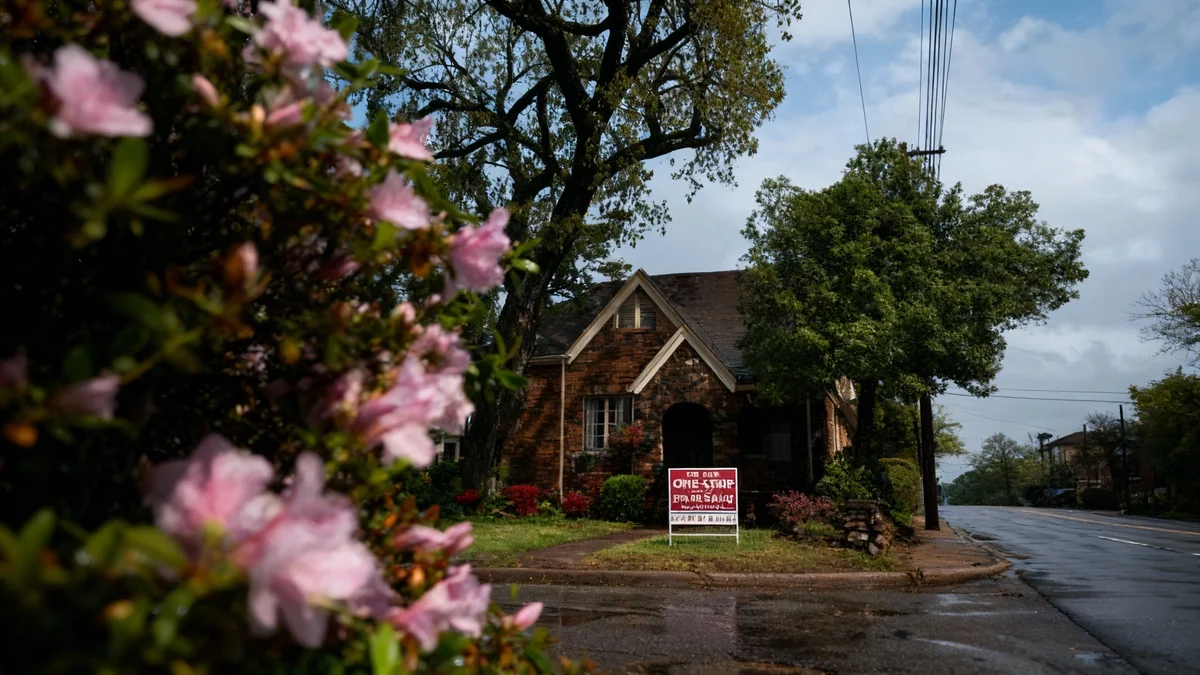The US housing market is undergoing a significant shift, with conditions becoming more favorable for buyers after years of seller dominance. According to a new forecast from the Mortgage Bankers Association, a combination of stabilizing home prices and a growing inventory of available properties is set to give house hunters more options and negotiating power over the next two years.
While mortgage rates are expected to remain above 6%, this new stability marks a departure from the volatile conditions seen in recent years. The forecast suggests a period of market normalization, where price growth will stagnate nationally, and transaction volumes are predicted to rise.
Key Takeaways
- Mortgage rates for a 30-year fixed loan are expected to remain above 6% for the next two years.
- National home prices are projected to stagnate, with minor declines of less than 1% possible in late 2026.
- An increasing supply of both new and existing homes is shifting market leverage from sellers to buyers.
- Sales of new and existing homes are forecast to rise by 4.6% and 5.1% respectively next year.
A New Normal for Mortgage Rates
Prospective homebuyers hoping for a return to the sub-4% mortgage rates of the pandemic era may need to adjust their expectations. The latest industry projections indicate that 30-year fixed mortgage rates will likely hover in the low 6% range for the foreseeable future.
While this is higher than historical lows, experts see it as a sign of stabilization. The extreme highs that touched 7% and 8% in previous years are not expected to return, providing a more predictable environment for buyers to plan their finances.
"Staying in the low sixes…is certainly better than the 7’s and 8’s that we saw over the past couple of years," said Mike Fratantoni, chief economist for the Mortgage Bankers Association. He added that while prices have run up rapidly, housing costs are expected to be "more level over the next several years."
This stability is crucial for market activity. According to BTIG analyst Eric Hagen, the market can function adequately with rates around 6.5% or 7%. However, he notes that a drop below 6% would likely trigger a significant increase in demand from both new buyers and existing homeowners looking to refinance.
Increased Housing Supply Tilts Market Toward Buyers
One of the most significant changes in the current market is the growing availability of homes for sale. For the past few years, a severe inventory shortage fueled intense bidding wars and soaring prices. That trend is now reversing.
"In ’23 and ’24, much of the story was willing buyers, but no properties available to buy," Fratantoni explained. "That has changed a lot in ’25—particularly on the new-construction side, but increasingly, month by month, on the existing-home side, too."
This increase in supply, from both homeowners and builders, means houses are sitting on the market longer. This gives buyers more time to consider their options and reduces the pressure to make rushed, above-asking-price offers. The result is a clear shift in leverage.
Projected Rise in Home Sales
The increase in inventory and market stability is expected to boost transactions. Forecasts predict a 4.6% rise in new home sales and a 5.1% increase in existing home sales next year. Overall mortgage loan origination is projected to grow by 7.6%.
Regional Differences Emerge in Price Stability
While the national forecast points to stagnant prices, the reality on the ground will vary significantly by location. Real estate remains a local game, and regional supply and demand will dictate market conditions.
According to Fratantoni, home prices are expected to hold up better in the Northeast and Midwest. These regions have not experienced the same level of new home construction as other parts of the country, meaning inventory remains tighter.
In contrast, buyers in supply-heavy markets, such as those in the Sunbelt, are likely to find the best deals. "You’re both seeing more properties on the market, and also you have a whole lot more negotiating power," he noted.
The Builder Advantage
In markets with a high volume of new construction, buyers may find significant incentives. Builders often offer deals to keep their inventory moving, such as permanent rate buy-downs, which can lower a buyer's monthly mortgage payment for the life of the loan. This gives new homes a competitive edge over existing properties.
What This Means for Buyers and Sellers
The changing market dynamics require both buyers and sellers to adjust their strategies. The days of sellers naming their price and receiving multiple offers within hours are fading in many areas.
Advice for Today's Buyers
- Negotiating Power: Buyers now have more room to negotiate on price, closing costs, and contingencies.
- More Options: With more homes on the market, buyers can afford to be more selective and avoid settling.
- Consider New Construction: Look for builder incentives like rate buy-downs that can make a new home more affordable.
- Explore Loan Types: Adjustable-rate mortgages (ARMs) are gaining popularity. With an average rate on a 5/1 ARM at 5.55% compared to 6.37% for a 30-year fixed loan, they can offer significant initial savings. More than one in ten recent loan applicants opted for an ARM.
Guidance for Sellers
For those looking to sell, the new environment demands a more strategic approach. Sellers in markets with abundant new construction will find themselves competing directly with builders who offer attractive financial incentives.
"It is not 2024, and the buyer has a whole lot more leverage," Fratantoni cautions sellers.
Sellers must now focus on making their homes stand out through proper pricing, excellent condition, and effective marketing. Understanding local market dynamics, including the level of new construction nearby, is more important than ever to achieve a successful sale.





